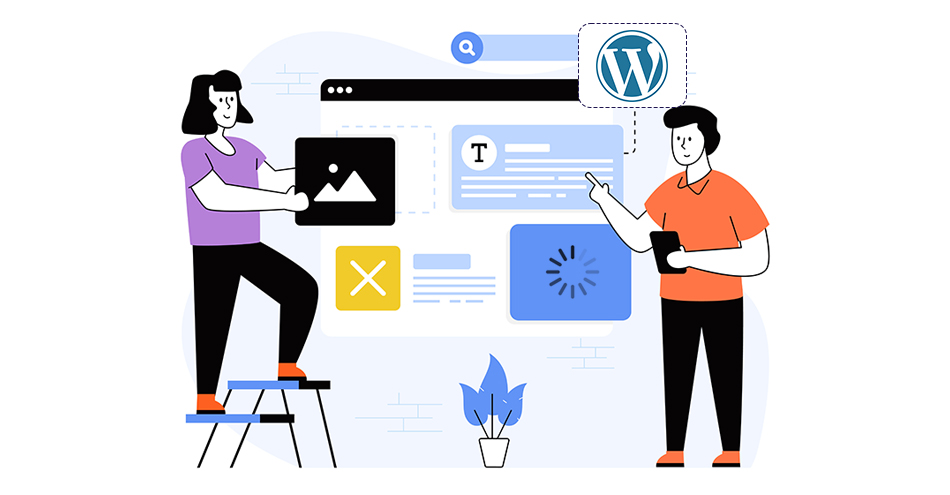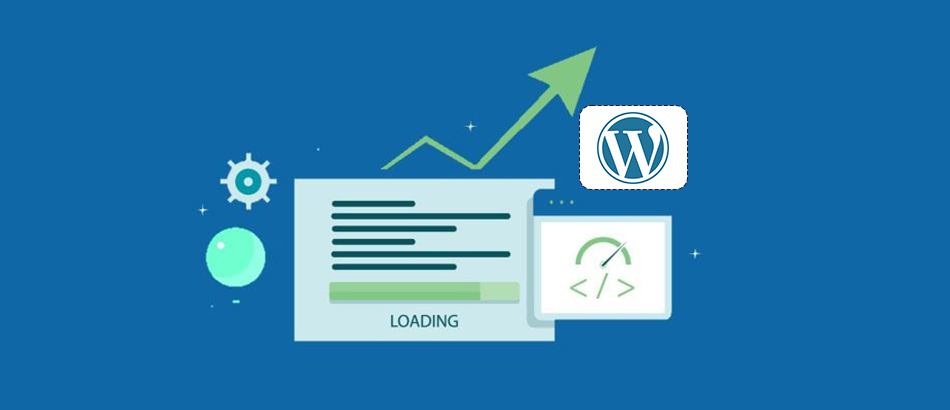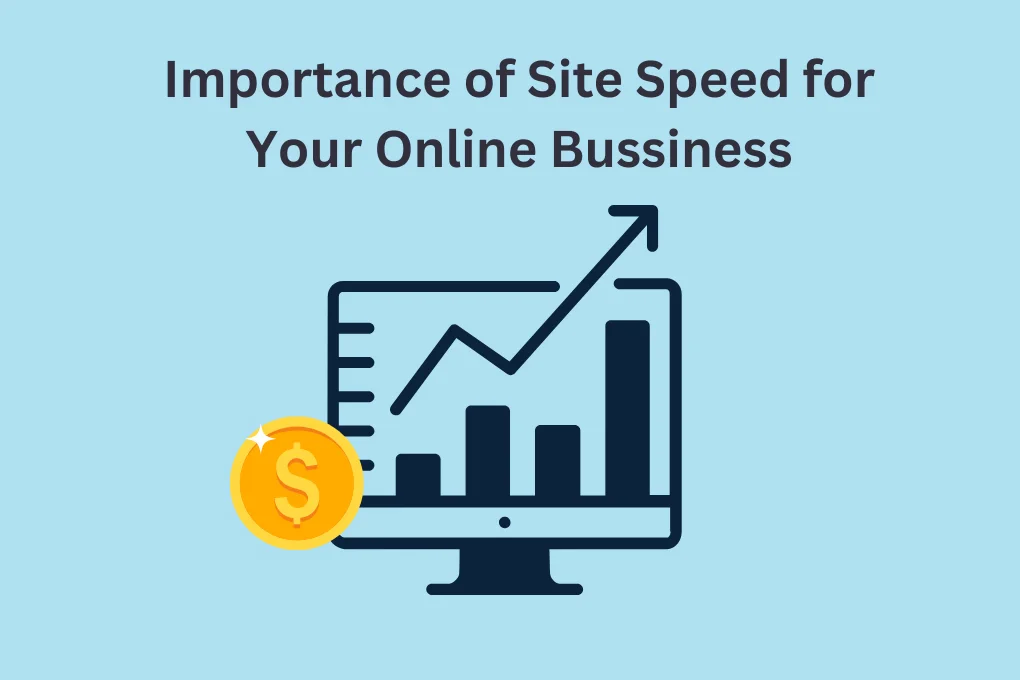TL;DR: Google fonts optimization improves WordPress speed by reducing file sizes, limiting font families, preloading critical fonts, and using efficient loading methods like display=swap or local hosting. Learn the best tips for steps for font optimization to boost SEO and web performance.
When it comes to improving WordPress website performance, typography is often overlooked. How a site loads and manages fonts, especially from services like Google fonts, can have a major impact on speed and user experience. While images and scripts usually take the spotlight in performance optimization, Google fonts optimization is one of the quickest and most effective wins that ensures a strong user experience.
Poorly handled fonts can significantly slow down page rendering, increase load times, and negatively impact WordPress Core Web Vitals. This guide will explore the best tips for Google font optimization and how it works to enhance WordPress website speed, SEO, and overall performance.
How Google Fonts Optimization can Speed up your WordPress Website
Typefaces are not merely aesthetic; they are critical resources for a website. When you load them via Google Fonts, you add external HTTP requests, file downloads, and possibly render-blocking behaviour. Also, if a font will not load promptly, metrics like Largest Contentful Paint (LCP) and Cumulative Layout Shift (CLS) will suffer.
An efficient Google fonts optimization means limited and smaller font files, with fewer external dependencies, and smarter loading strategies. In a WordPress context, that means less impact on page-load performance, faster visible text, fewer layout shifts, and a more stable user experience. With search engines like Google increasingly factoring performance into ranking, and with users abandoning slow sites, optimizing fonts becomes a strategic move.
Common Font Loading Issues That Slow Down WordPress

There are a few font loading issues that might slow down your WordPress website speed. Here are some common ones:
Multiple Font Families and Variants
It’s tempting to pick multiple font families (for headings, body, UI) plus many weights and styles (light, regular, bold, italic). But each combination adds to the file size and separate request downloads. The more you load, the more requests the browser makes, and the longer the site has to wait for rendering. For WordPress themes that already enqueue multiple typefaces for plugins, blocks, or widgets, this becomes a real drag.
Render‐Blocking Font Requests
When fonts are loaded via an external stylesheet (e.g., fonts.googleapis.com), the browser may defer rendering text until the font is available or render fallback fonts and then swap. This results in delayed FCP, LCP, or a flash of invisible text (FOIT). According to web.dev’s “font best practices”, delayed text rendering and layout shifts are linked to font loading. In WordPress, many themes load Google Fonts synchronously in the head, which blocks the render flow.
Unoptimized Google Fonts delivery
Even though Google Fonts are served from a fast CDN, large file sizes remain an issue (especially if you load full character sets), multiple domains (DNS lookups), and uncontrolled caching on user browsers. Self-hosting them locally is one recommended path for improved Core Web Vitals as well. Also, not using modern formats (like WOFF2, TTF, and EOT), not preloading critical fonts, or failing to use font-display: swap can hamper optimization.
Proven Google Fonts Optimization Tips for Improved WordPress Speed

Optimizing Google fonts can help you improve the speed of your WordPress site. Here are some proven tips to implement:
1. Use Less Font Varieties (Weights & Styles)
Choose only the weights and styles you really need to use. Use limited (one or two) font families. If you only need regular and bold, don’t load variants like light, medium, ultra-bold, italic, etc. Only use the most needed font weights, as each one adds to the downloading time, slowing down WordPress.
How to limit font varieties (weights and styles)
Step 1: Select only essential variants on Google Fonts
- Visit Google Fonts
- Choose your font (e.g., Inter, Roboto, Open Sans)

- Select only the weights you truly need (example: 400 & 700)
Step 2: Copy the embed code
<link rel="preconnect" href="https://fonts.googleapis.com">
<link rel="preconnect" href="https://fonts.gstatic.com" crossorigin>
<link href="https://fonts.googleapis.com/css2?family=Open+Sans:ital,wdth,wght@0,75..
100,300..800;1,75..100,300..800&display=swap" rel="stylesheet">
Google Fonts usually loads multiple unnecessary variations.
Step 3: Trim the URL manually
Example of optimized Google Fonts URL:
<style>
@import url('https://fonts.googleapis.com/css2?family=Open+Sans:ital,wdth,wght@0,75
..100,300..800;1,75..100,300..800&display=swap');
</style>
Step 4: Add the trimmed embed link to your theme
- Add it inside via header.php
- OR enqueue it using functions.php
Step 5: Update your CSS
Use only the weights you loaded:
font-weight: 400;
font-weight: 700;
2. Preload Key Fonts
Use <link rel=”preload” as=”font” type=”font/woff2″ crossorigin> for your most critical font files (e.g., heading font above the fold). This signals the browser to fetch the critical fonts early, reducing render delays and layout shifts. It significantly improves Core Web Vitals like LCP and CLS, ensuring faster, more stable page rendering.
How to Preload Key Fonts
Preloading ensures above-the-fold text loads immediately. Here’s how to implement it step-by-step:
Step 1: Find the font file URL
- Open your site
- Press F12 → Network → Font
- Copy the .woff2 file URL
Step 2: Add preload to your header
Paste this inside
:
<link rel="preload" href="/wp-content/themes/your-
theme/fonts/roboto-regular.woff2" as="font"
type="font/woff2" crossorigin>
Step 3: Only preload essential ones
- Preload heading font or main body font
- Do NOT preload too many fonts (causes performance issues)
3. Limit Font Families
Stick with one or two font families, one for headings, one for body text. This can improve WordPress site speed by minimizing the number of HTTP requests and font file downloads. Using minimal font families instead of many decreases the overall load time and ensures faster, smoother text rendering across devices.
How to Limit Font Families:
Here’s how you can prevent loading the extra font families and weights:
Step 1: Choose a minimal setup
- 1 font for body
- 1 font for headings (Or use a single family for both)
Step 2: Remove unnecessary families
Check:
- Theme settings
- Page builder settings
- Plugins that add their own fonts
Step 3: Use Asset CleanUp or Perfmatters
Disable unwanted font families being loaded by plugins or themes.
4. Host Google Fonts Locally
Rather than loading fonts from Google’s CDN, download them, upload them into your WordPress theme (or use a plugin), and serve from your origin/own CDN, reducing the latency. Benefits include fewer DNS requests and better control.
How to Host Google Fonts Locally
Step 1: Download fonts
Use:
- Google Fonts website
- Or plugin OMGF / Perfmatters (Local Google Fonts)
Select:
- Only the weights you need
- Only required subsets
- Download .woff2
Step 2: Upload to your server
- Create folder:
/wp-content/themes/your-theme/fonts/
- Upload all .woff2 files.
Step 3: Add @font-face in CSS
Example:
@font-face {
font-family: 'Roboto';
font-style: normal;
font-weight: 400;
src: url('/wp-content/themes/your-theme/fonts/roboto-400.woff2') format('woff2');
font-display: swap;
}
Step 4: Apply the font in your CSS
body {
font-family: 'Roboto', sans-serif;
}
Step 5: Remove Google CDN calls
Delete or comment out <link href=”https://fonts.googleapis.com/…”> from your theme.
5. Use “Display=Swap”
Ensure your @font-face or Google Fonts URL includes font-display: swap so the fallback font is shown immediately, then swapped when the custom font loads. This reduces invisible text, improves perceived performance, and avoids layout shifts.
Here’s the step-by-step integration:
Step 1: Add display=swap to the Google Fonts URL
Example:
https://fonts.googleapis.com/css2?family=Roboto:wght@400;700&display=swap
Step 2: Add font-display in self-hosted fonts
font-display: swap;
Step 3: Test for FOIT/CLS
Run a PageSpeed test and ensure there is no invisible text.
6. Specify Character Subsets
When loading fonts from Google Fonts, many sites automatically pull in entire character sets, including Cyrillic, Greek, and other scripts, even if the website only uses English text. These unnecessary character subsets significantly increase font file size and slow down load times.
To optimize website typefaces for speed, specify only the required subset, such as latin or latin-ext, in your Google Fonts URL.
Here’s how to do it practically:
Step 1: Check what language your site uses
Most WordPress sites only need Latin or Latin-ext.
Step 2: Add subset parameter
Example:
(https://fonts.googleapis.com/css2?family=Roboto:wght@400;700&subset=latin&display=swap)
Step 3: Avoid loading Cyrillic/Greek/etc. unless required
This can reduce your font size by 50–70%.
7. Combine CSS Requests
Every Google Fonts stylesheet request generates a separate HTTP call. If your WordPress theme or plugins load multiple of them, those extra requests can delay page rendering.
Combining all your font families into a single request consolidates downloads and enables the browser to fetch them together. Many WordPress performance plugins have options for combining fonts.
How to Combine CSS Requests
Step 1: Check if your theme loads multiple font URLs
Example:
- Roboto 400
- Roboto 700
- Open Sans 300
- Open Sans 600
Each is a separate request.
Step 2: Merge into a single Google Fonts request
Example:
https://fonts.googleapis.com/css2?family=Roboto:wght@400;700&family=Open+Sans:wght@300;600&display=swap
Step 3: Use plugins
Autoptimize → Optimize Google Fonts
This automatically combines URLs.
8. Enable Caching for Fonts
Caching allows browsers to store font files locally so that returning visitors don’t need to download them again. This dramatically improves repeat page load times and reduces server load. If you host Google Fonts locally, you can configure your server or CDN to set long cache lifetimes.
How to Enable Caching for Fonts:
Step 1: Self-host fonts
WOFF2 files must be stored on your domain.
Step 2: Add long-term caching rules
In .htaccess:
<FilesMatch ".(woff2)$">
Header set Cache-Control "max-age=31536000, public"
</FilesMatch>
Step 3: Set caching via CDN
Cloudflare, BunnyCDN, etc. → set caching to 365 days.
9. Combine and Minify Font Requests
Use CSS minification and removal of unused font CSS (e.g., weights not used). Many WordPress themes and plugins include redundant font CSS, such as unused weights or duplicate imports. These extra rules increase file size and can cause multiple font loads. Combining and minifying font CSS ensures the browser only downloads what’s needed.
How to Combine and Minify Font Requests:
Step 1: Run a CSS audit
Identify unused font-weight selectors.
Step 2: Clean up font CSS
- Remove unused weights
- Remove duplicate @font-face rules
Step 3: Use plugin support
Autoptimize → CSS minify ON
Perfmatters → Remove unused CSS
10. Test and Monitor with PageSpeed Tools
Once you’ve done your font optimization, test using Google PageSpeed Insights, GTmetrix, or WebPageTest. Look for warnings like “Ensure text remains visible during webfont load” or “Preload key requests”. Font loading optimization should be addressed while performing performance optimizations, as page font loading time can impact LCP and CLS significantly.
How to Test and Monitor:
Step 1: Run the test in the tool.
Step 2: Check for font-related warnings
Look for:
- “Preload key requests”
- “Ensure text remains visible during webfont load”
- “Reduce unused CSS”
Step 3: Fix based on recommendations
Revisit the steps above and update font loading.
Best WordPress Plugins to Optimize Fonts

Font optimization becomes much easier with the right WordPress plugins. These tools help you control, combine, and locally host web fonts:
OMGF (Optimize My Google Fonts)
OMGF is a WordPress plugin designed specifically for Google font optimization. It lets you self-host Google Fonts, preload and unload unused ones, set fallbacks, and reduce CSS requests.
Autoptimize
Autoptimize is a broader performance plugin, but it has powerful options for fonts. It allows combining CSS/JS, optimizing Google Fonts by “combine and link” or “combine and load async”, and removing Google Fonts entirely if needed.
Perfmatters
Perfmatters is a premium performance plugin. Among its features is “Local Google Fonts,” which auto-downloads font files, hosts them locally, and ensures optimal loading.
Asset CleanUp
Asset CleanUp is another plugin that helps unload unnecessary assets (including fonts) on specific pages or across entire sites. While not a font-only plugin, it plays a role in reducing unused font loads and thereby contributes to font optimization for WordPress.
How Optimized Fonts Improve SEO and Core Web Vitals

Optimizing your website’s fonts doesn’t just enhance design consistency; it also plays a crucial role in technical performance. Here’s how Google fonts optimization directly improves your site’s SEO and Core Web Vitals:
Impact on LCP (Largest Contentful Paint)
If your largest visible element is text (e.g., a hero heading), slow font loading delays that render, hurting LCP. According to Prismic, “Poorly optimized web typefaces can cause delays and negatively impact the LCP” by increasing total blocking time. With faster font rendering via Google font optimization, you shorten LCP and get better scores.
Reduced CLS (Cumulative Layout Shift)
If a fallback font loads, then the custom one swaps in with different metrics (width/height), which causes layout shifts. Web.dev notes that layout shifts can occur from a web font and its fallback differing in size. Optimizing font delivery (preload, font-display swap, local hosting) minimizes that risk and improves CLS.
Better User Engagement and Search Rankings
A site that loads faster retains users, lowers bounce rates, and encourages longer sessions. Backlinko’s study of over 200k webpages found that good Web Vitals correlate with lower bounce rates and higher pages-per-session. And from an SEO perspective, improving page speed and Web Vitals contributes to better search engine performance. So investing in font optimization for WordPress not only helps UX but supports your SEO strategy.
Conclusion
When it comes to WordPress performance, typography deserves just as much attention as images, caching, or JavaScript. By implementing Google fonts optimization, you can ensure your fonts load efficiently, reduce render-blocking and layout shift, and improve key metrics.
Make font optimization for WordPress an integral part of your website-speed strategy. When you optimize website fonts for speed, you’re not just fine-tuning aesthetics, you’re enhancing performance, user experience and ultimately, your search visibility.















































